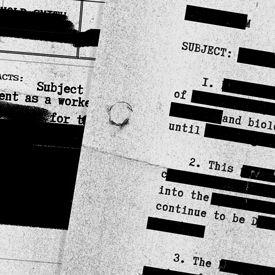Why improper redaction could be one of your firm’s biggest security weaknesses

Stock photo.
In the days of old, when printers were king and there was nothing that the right pen couldn’t fix, redacting was a much simpler process. Get a fresh enough Sharpie and mark carefully, and your clients’ sensitive data was safely hidden from prying eyes.
Now, in the age of digital documents, it’s more complicated—and more critical—to make sure that your data is properly redacted. That means permanently unavailable and irreversible.
Why it matters
Federal and state law dictate which information—be it pertaining to minors, financial and health records, or other sensitive subjects—can and cannot be included in court filings. Adhering to these laws protects your clients and protects your firm.
The stakes are higher now that so many courts have moved online. When paper filings stayed tucked into cabinets to collect dust, a page redacted with a Sharpie that skimmed too lightly over a word might never be seen by anyone outside the court. But now that documents are posted publicly online, any sensitive data that isn’t fully protected is potentially visible to millions if amplified by traditional and social media.
Journalists have learned this quickly. The news has been peppered with examples of redaction gone wrong.
-
• Leaked National Security Administration documents released the name of a covert agent.
• District reports about high school shooter Nikolas Cruz were disclosed.
• Incriminating information about presidential campaign consultant Paul Manafort was revealed.
• 100 pages of financial transactions in an SEC settlement became public knowledge.
These are just a few stories that made national news. There are also plenty of less publicized examples of improperly redacted documents that nevertheless proved highly damaging to their owners.
Wrong ways to “redact”
Unfortunately, there are a lot of ways to cover up sensitive data that are not actually redacting at all. Whether you’re using Adobe Acrobat, Kofax, or another popular PDF editing software, it’s not wise to rely on workarounds that were originally intended to serve another purpose. Examples include:
Using comment tools to cover over the text
This is the digital equivalent of putting a Post-It note over the top of your document. Just because you can’t see it doesn’t mean it’s not still there.
Changing the text to white
The text is colored white to disguise it, highlighting the passage with a cursor or copy-and pasting it into another document will immediately reveal the words.
Deleting text
While this may inch closer to hiding the data the way you want, the metadata in your document keeps a record of everything that was in the file at any point, even if the file was re-saved. (Side note: Don’t forget to remove metadata!)
Anything done in Microsoft Word
If you search, you’ll find plenty of articles claiming to enable redaction in Microsoft Word and other word processing tools. By employing this tactic and that, they propose ways to hide your data while also drafting your document.
However, since Microsoft itself asserts that it does not have a redaction feature, it is important to believe the creators of the tool and not rely on any other methods within the software. Word is a system for creating documents, not finalizing them. Attempting to do so risks the safety of your data.
The bottom line is that the only safe way to redact documents is to use an actual PDF editing tool with a built-in redaction functionality.
How to properly redact your PDF documents
By using a feature built specifically to redact data within a PDF editing tool, you are trusting that the builders of the tool have engineered a way to mask the selected information down to the core of the document, in a way that can’t be reverted.
Confirm that your tool of choice has this functionality, and train your whole team on how it works. Each of these redaction-capable systems has thorough training available on exactly how this feature should be employed.
- • Adobe Acrobat
• EasePDF
• Foxit
• Kofax
Finally, always double-check your work! Pretend that you’re a journalist or opposing counsel trying to figure out what was so important that it needed to be redacted.
- • Use the Ctrl+F/Cmd+F keys to search for a word or phrase that should have been hidden.
• Attempt to copy-and-paste the sections of text into another document.
• Try editing the PDF to change the color of the text.
If you can still see the words or numbers after attempting any of these tests, so can anyone else. Go back to the beginning and make sure that you are taking every step to apply redaction in your specific tool.
Redaction might be tricky in the beginning, but it’s crucial to protecting your clients’ data and preventing your firm from making unwanted headlines. Learning what and how to redact is a foundational component of technological competency, and vital to the reputation of your firm.
This content is advertising.


